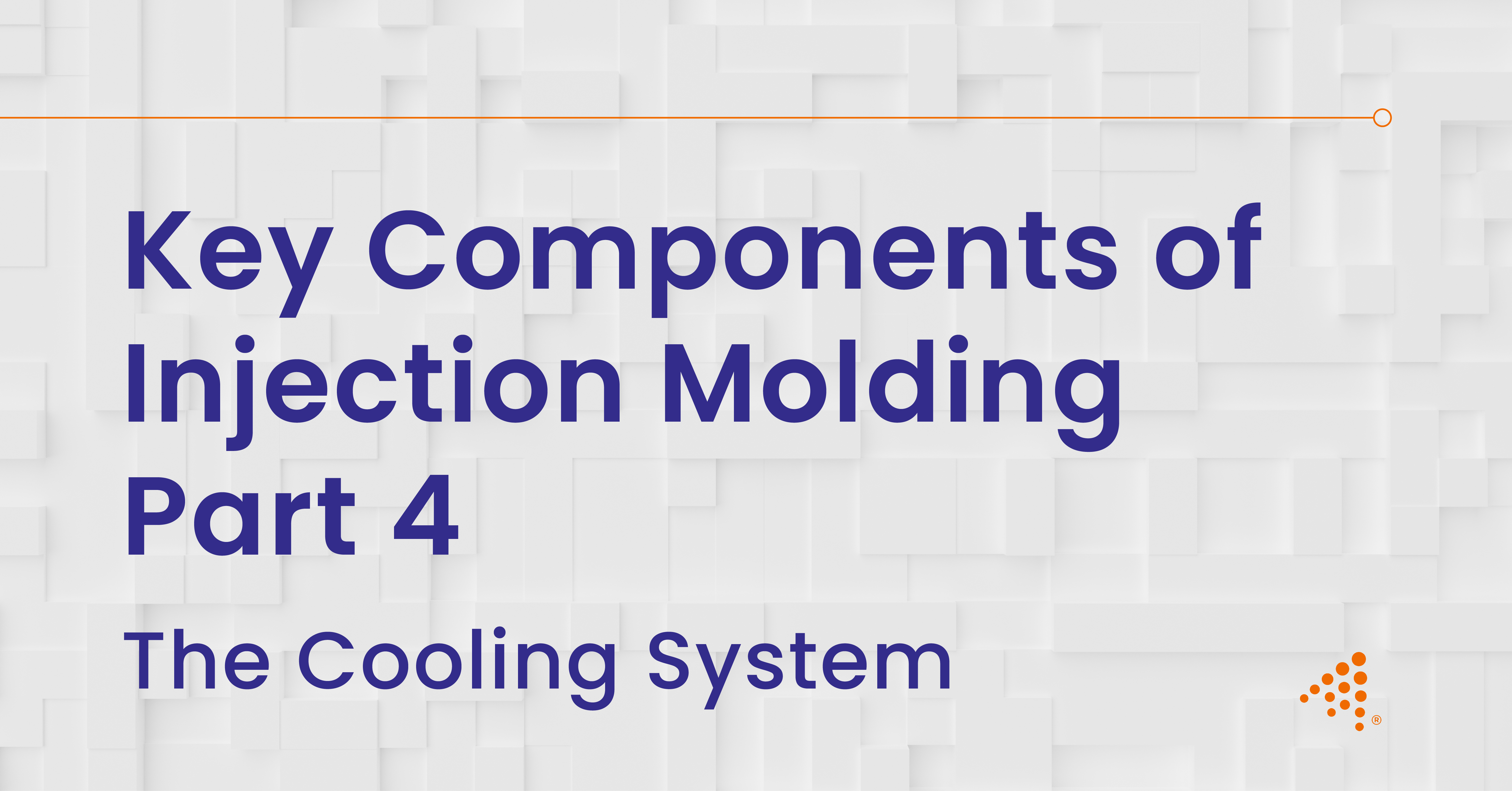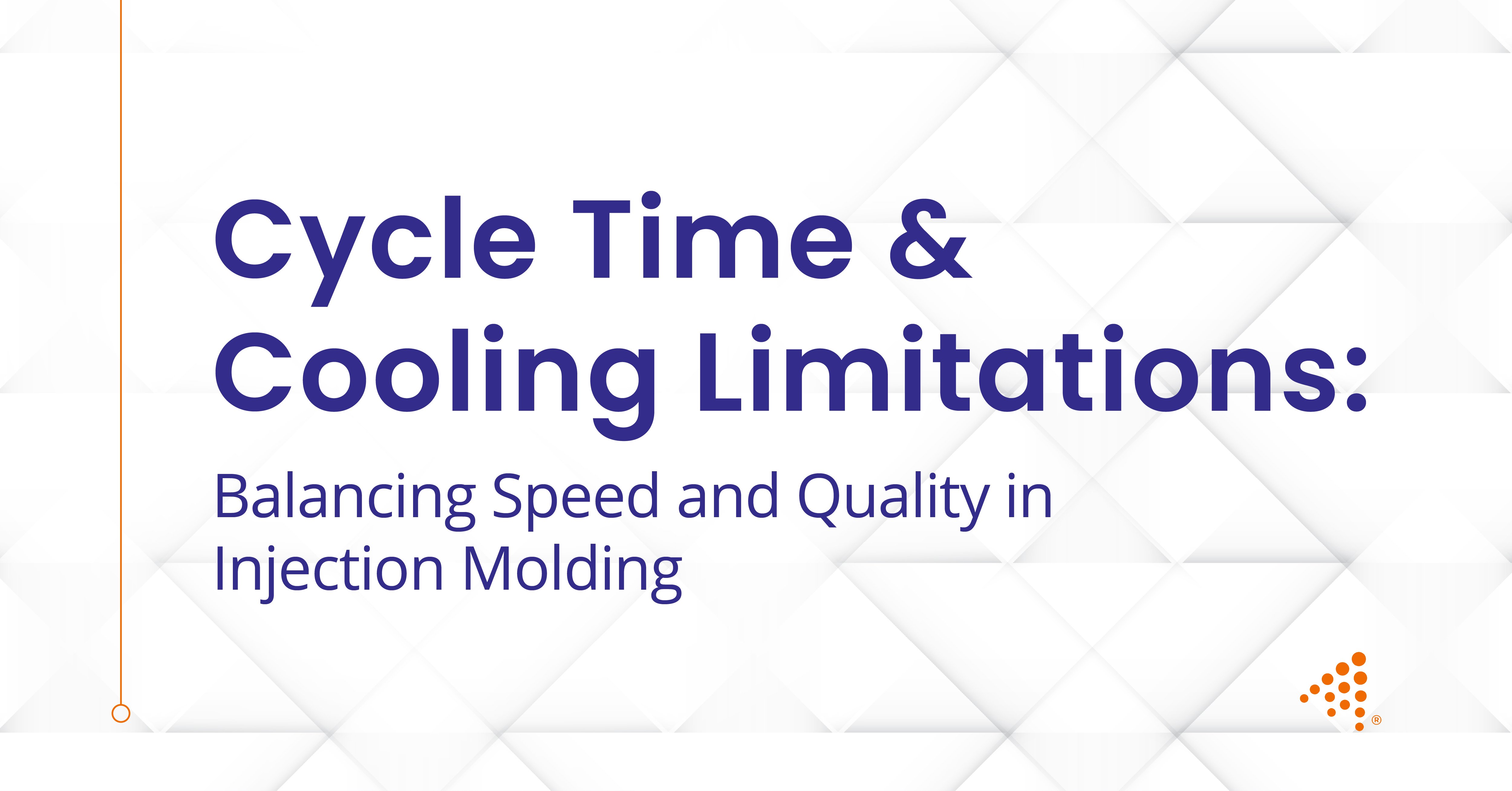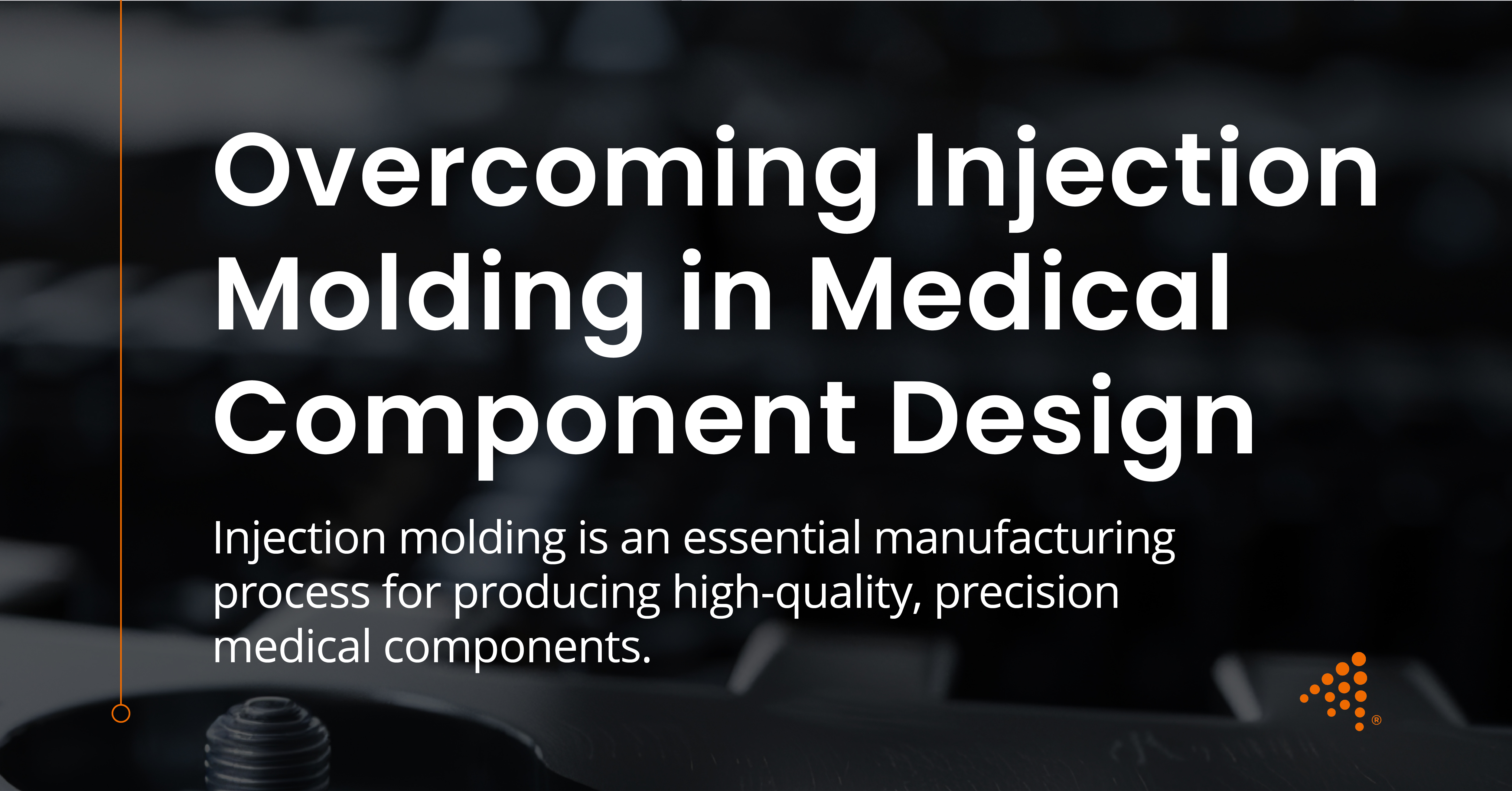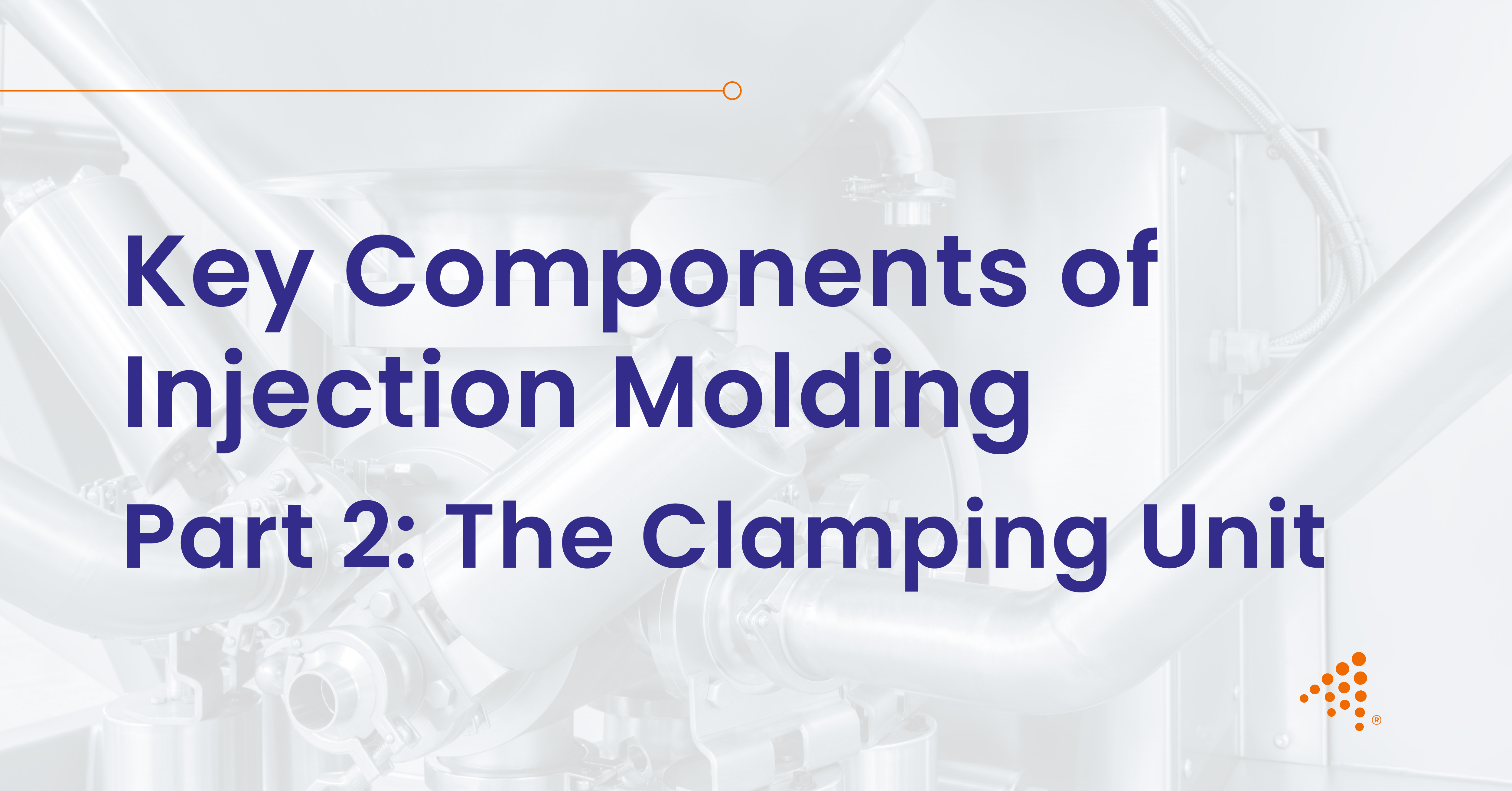Cycle Time & Cooling Strategies in Injection Molding
In the intricate world of injection molding, the duration required to complete one full production cycle, known as cycle time, significantly...
4 min read
Nick Erickson : Jun 12, 2025 9:18:00 AM

In the precision-driven world of injection molding, meticulous control over the mold's temperature is fundamental for achieving optimal cycle times and consistent part quality. The cooling system is the unsung hero in this process, tasked with maintaining the precise thermal conditions necessary for molten plastic to solidify uniformly. An inadequate or poorly designed cooling system can lead to a cascade of problems, including dimensional inaccuracies like warping and shrinkage, or cosmetic flaws resulting from uneven cooling, ultimately compromising the integrity and performance of the final product. This is particularly significant in industries like medical injection molding, where precision and material stability are paramount.
Read More About Nylon (Polyamide): Durable and Versatile for Many Applications
An injection mold's cooling system comprises several engineered elements working in concert to extract heat efficiently.
At the heart of most cooling systems are water channels, often referred to as cooling lines. These pathways are machined or integrated directly into the mold plates, typically surrounding the cavity and core inserts. A temperature-controlled fluid, usually water or a water-glycol mixture, circulates continuously through these channels. As the hot plastic fills the mold, the circulating fluid absorbs thermal energy, transferring it away from the steel and the solidifying part. The layout, diameter, and proximity of these channels to the molding surface are carefully calculated during the plastic injection mold design services phase to promote uniform heat extraction across the entire part geometry. Maintaining the mold temperature within the recommended range for the specific plastic resin being processed is vital for controlling solidification, reducing internal stresses, and achieving the desired material properties.
To enhance the effectiveness of standard cooling lines, especially in deeper mold sections or cores, structures like baffles and bubblers are often employed.
Representing a significant advancement in mold cooling technology, Design for Additive Manufacturing (DfAM) through conformal cooling involves creating cooling channels that closely follow the contours of the part's geometry. Unlike traditional straight-drilled lines, these complex channels can maintain a consistent distance from the mold surface, even around complex curves, cores, and cavities. This is typically achieved using metal additive manufacturing services, or 3D printing, to build the mold inserts layer by layer, allowing intricate internal channel networks to be formed. Conformal cooling offers superior thermal management, leading to more uniform part cooling, significantly reduced cycle times (often by 30-50%), and improved dimensional stability, especially for intricate parts or those made from challenging materials.
While water is the most common coolant, certain situations necessitate the use of oil-based thermal fluids. High-temperature engineering resins, such as PEEK, PEI (Ultem), or high-temperature nylons, require significantly higher mold processing temperatures, sometimes exceeding 300°F (149°C) or even 400°F (204°C). At these temperatures, water would boil, causing pressure issues and inefficient heat transfer. Specialized thermal oils have much higher boiling points and remain stable at elevated temperatures. Oil cooling systems utilize high-temperature pumps, seals, and temperature controllers designed specifically for handling these fluids, allowing molds to operate consistently at the high temperatures needed for processing these advanced polymers.
Read More About Ensuring Consistent Quality with Tailored Quality Control Plans
The operation of the cooling system is a continuous thermal exchange process integrated into the injection molding services cycle:
Aprios offers end-to-end injection mold design services, with a strong focus on design for manufacturing solutions and DfM development services.
The performance of the cooling system profoundly impacts nearly every aspect of the injection molding outcome. Inconsistent or inefficient cooling is a primary source of part defects and production inefficiencies. Without adequate temperature regulation, the plastic material may solidify unevenly, leading to differential shrinkage rates across the part. This can manifest as warping, where the part distorts or bends out of its intended shape, or sink marks, which are depressions on the surface usually opposite thicker sections like ribs or bosses that cool more slowly. Uneven cooling can also cause variations in surface finish, internal stresses that compromise mechanical strength, and dimensional inconsistencies that prevent parts from meeting tolerance specifications – a frequent challenge in medical device components requiring tight fits and reliable performance.
Optimizing the cooling system design and operation is therefore a primary focus for improving both part quality and manufacturing efficiency. By investing in well-engineered cooling solutions, whether utilizing advanced techniques like conformal cooling or carefully designed conventional channels, manufacturers can achieve more consistent part dimensions, better surface aesthetics, enhanced mechanical properties, and faster production cycles. A thoughtfully designed cooling system is indispensable for producing high-quality, reliable injection molded parts, especially when dealing with complex geometries or high-performance materials common in the medical, aerospace, and filtration industries.
If you’re looking to optimize your cooling system or have questions about improving your injection molding processes, Aprios is here to help. Our team of experts can provide guidance and solutions to ensure your projects run smoothly and efficiently.

In the intricate world of injection molding, the duration required to complete one full production cycle, known as cycle time, significantly...

Injection molding is an essential manufacturing process for producing high-quality, precision medical components where device reliability and patient...

In the injection molding process, the Clamping Unit is responsible for holding the mold halves together during both the injection and cooling phases....